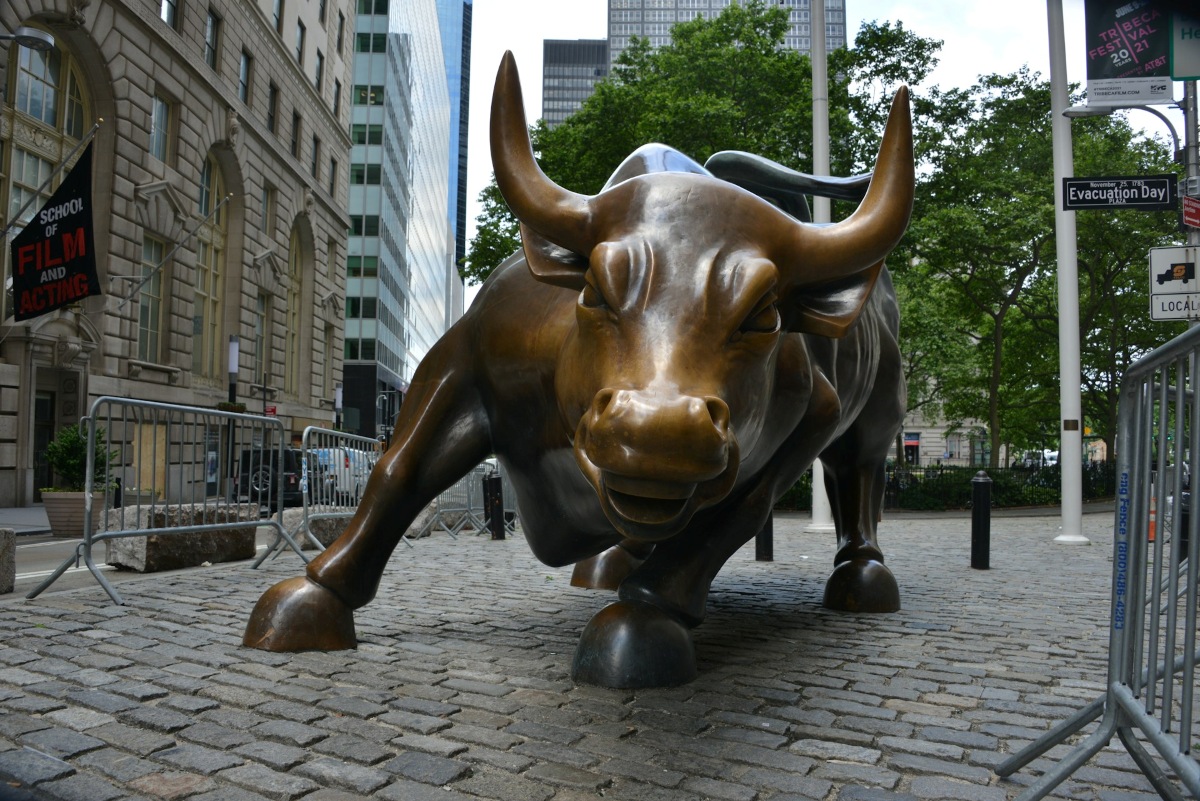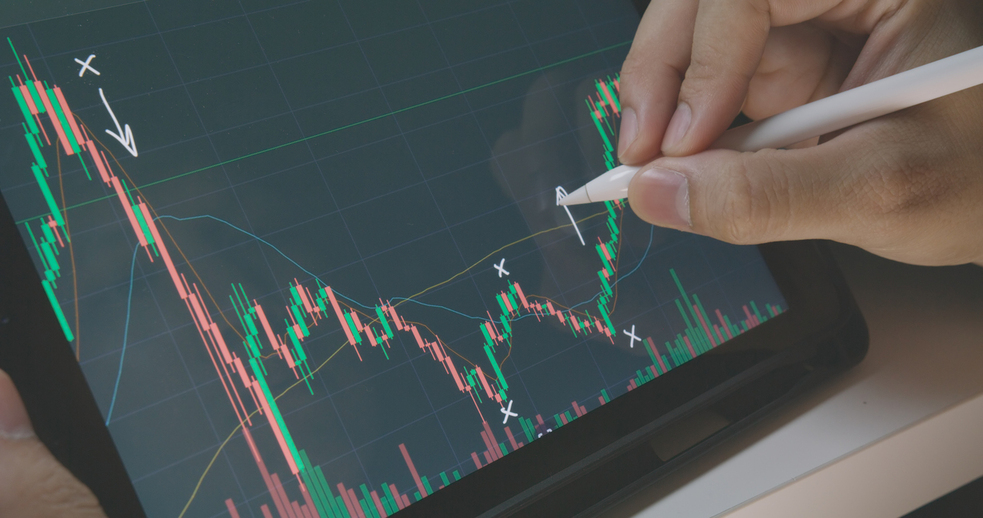The US equity markets marched relentlessly higher in recent weeks with the S&P 500 index registering its best performance for the month of September (+3.5 per cent) in 15 years, fuelled by optimism over artificial intelligence and following the long-awaited reduction in interest rates by the Federal Reserve.
During the third quarter of 2025, the S&P 500 index increased by 7.8 per cent, the Dow Jones Industrial Average gained 5.2 per cent with the Nasdaq outperforming the other indices as it climbed by 11.2 per cent.
The S&P 500 has surged almost 40 per cent since its lows in April 2025 in response to the tariff announcements on ‘Liberation Day’, once again reaching new record highs last week with the index surpassing 6,750 points bringing the year-to-date gains to over 11 per cent. Last week’s upturn was in the main brought about by continued optimism about the AI investment thesis following the surge of more than 23 per cent in the share price of Advanced Micro Devices Inc (AMD) after a deal with OpenAI that could ultimately grant the ChatGPT parent company a 10 per cent stake in the chipmaker.
Incidentally, this week marks the 3rd anniversary of the current bull market with an upturn of 83 per cent since the S&P 500 index had bottomed at 3,577 points on 12 October 2022. In the previous 11 bull markets since World War II, the average return of a bull market was 191 per cent and on one occasion only it failed to extend beyond its 4th year.
Apart from this, there are several other historical trends indicating that the rally will continue in the months ahead. The fourth quarter of the year tends to be positive for the S&P 500 when it has been trending upward in the first nine months of the year. In fact, over the last 76 years, when the S&P 500 climbed in the first nine months of the year, investors saw gains in the fourth quarter almost 90 per cent of the time.
A number of market commentators recently opined on the near-term trends for the US equity market. One market strategist claims that the S&P 500 will reach at least 7,000 points by the end of this year with potential for further gains next year since share prices generally climb if the reduction in interest rates by the Federal Reserve is not related to an economic recession. Historically, the S&P 500 rises by circa eight per cent over a six-month period when a recession is avoided during a monetary policy easing environment. Last month, the Federal Reserve reduced the Federal funds rate by 25 basis points to a range of 4.00 per cent to 4.25 per cent. The publication of the minutes last week of the September monetary policy meeting signalled more rate cuts could be announced during the last quarter of the year.
Some market commentators are more bullish arguing that the S&P 500 could rally by over 15 per cent from current levels to 7,750 points by the end of 2026 with the possibility of a jump to 9,000 points under a “bubble scenario”.
Naturally, Nvidia, as the largest component of the S&P 500 index, has been gaining a fair share of attention. Several commentators are upgrading their price targets on this company following Nvidia’s strategic investment in businesses such as OpenAI. Nvidia recently announced that it will invest up to USD100 billion in OpenAI as the ChatGPT-maker plans to build and deploy Nvidia systems. A particular analyst raised the price target on Nvidia to USD300, implying upside of over 60 per cent from current levels arguing that the market is still “in the early phases of a multi-trillion AI Infrastructure build-out”. Last month Nvidia became the first company to reach a market cap of USD4.5 trillion.
On the other hand, some strategists on Wall Street believe the equity market rally will soon end in view of elevated company valuations and comparisons to the dot-com period in 1999/2000. One of the multiples quoted in various articles was the price-to-earnings ratio of the companies forming the S&P 500 index which is at 22.8 times and just below the peak of 25 times in 1999 at the time of the bubble in technology stocks at the turn of the century.
The current chairman of the Federal Reserve Jerome Powell also opined on the current bull market and recently remarked that “by many measures … equity prices are fairly highly valued.” Although the Chairman acknowledged the elevated market valuations, he also added that this is not “a time of elevated financial stability risks.” This was echoed by officials of the Bank of England warning about prospects of a “sharp market correction” fuelled by speculation about artificial intelligence. In the past few weeks, the CEO of JPMorgan Jamie Dimon as well as Jeff Bezos also sounded warnings on a possible “AI bubble”.
One of the arguments highlighted by some commentators has been the use of “circular financing” in view of the deals struck by Nvidia with a number of its customers to help them buy its chips which was a characteristic of the dot-com period in 1999/2000. One of the most recent deals was the agreement by the ChatGPT developer, OpenAI, to buy Nvidia graphics processing units (GPU’s) in exchange for an investment of up to USD100 billion by Nvidia into OpenAI. This has been interpreted as a form of financing by the leading chip provider to its customers.
The anxiousness of investors on the possibility of a stock market downturn was very evident last Friday as the S&P 500 shed 2.7 per cent (its largest daily decline since April 2025) after the US President threatened to impose tariffs on Chinese goods thereby reigniting fears of a full-blown trade war between the two largest economies.
While some analysts have interpreted the latest development between the US and China as a negotiating tactic ahead of the US tariffs that are set to come into effect on 1st November, the upcoming earnings season that commenced this week with many banks reporting on their Q3 results will be the more important catalyst for the equity market in the near-term apart from other deals among technology companies that would reinforce the AI investment thesis.
The article contains public information only and is published solely for informational purposes. It should not be construed as a solicitation or an offer to buy or sell any securities or related financial instruments. No representation or warranty, either expressed or implied, is provided in relation to the accuracy, completeness or reliability of the information contained herein, nor is it intended to be a complete statement or summary of the securities, markets or developments referred to in this article. Rizzo, Farrugia & Co. (Stockbrokers) Ltd (“Rizzo Farrugia”) is under no obligation to update or keep current the information contained herein. Since the buying and selling of securities by any person is dependent on that person’s financial situation and an assessment of the suitability and appropriateness of the proposed transaction, no person should act upon any recommendation in this article without first obtaining investment advice. Rizzo Farrugia, its directors, the author of this article, other employees or clients may have or have had interests in the securities referred to herein and may at any time make purchases and/or sales in them as principal or agent. Furthermore, Rizzo Farrugia may have or have had a relationship with or may provide or has provided other services of a corporate nature to companies herein mentioned. Stock markets are volatile and subject to fluctuations which cannot be reasonably foreseen. Past performance is not necessarily indicative of future results. Foreign currency rates of exchange may adversely affect the value, price or income of any security mentioned in this article. Neither Rizzo Farrugia, nor any of its directors or employees accepts any liability for any loss or damage arising out of the use of all or any part of this article.
From stability to strategy – The 2025 banking reset and the 2026 roadmap
Global markets closed 2025 on a strong note as AI-led equity gains
Strong year for European equities
European equity markets capped off 2025 with strong double-digit gains
S&P 500: Another year of strong gains
The S&P 500 index has rallied nearly 17% so far in 2025







